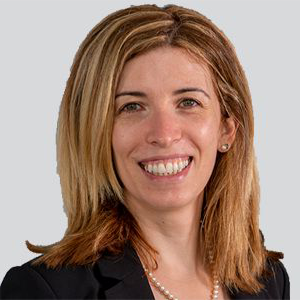Video
Cardioversion and Atrial Fibrillation Ablation
John L. Berk, MD: Dr Hanna, what’s your feeling about cardioversion and nodal ablation?
Mazen Hanna, MD: In cardioversion, I think that if you have somebody with paroxysmal atrial fibrillation, everybody gets a chance at trying to achieve sinus rhythm. I think that some patients with cardiac amyloidosis, no matter what you do, you can’t just keep them in rhythm. You’re getting cardioverted every couple of weeks.
The 1 thing I would say about cardioversion, is that there was a publication showing increased risk of thromboembolism. And the fact is that even in sinus rhythm, patients who have a lot of amyloid penetration in their atria can have such poor atrial function that, for example, on mitral inflow, you barely see it in an a-wave.
It’s been documented that you can have atrial thrombus and normal sinus rhythm. Or, for example, when they’re in AFib [atrial fibrillation] and you haven’t adequately anticoagulated for a period of months, well above what you would consider needed, that you wouldn’t need a “T” any more. We’re now recommending that patients get TE, even if they’re adequately anticoagulated because there’s a percentage they’ll have persistent atrial thrombus. It’s just that the CHADSVASC score does not account for the very high risk of atrial thromboembolism that you see in patients with cardiac amyloidosis. As far as, did you say ablation?
John L. Berk, MD: Yeah.
Mazen Hanna, MD: We actually looked at atrial fibrillation at our institution. The consensus before we started doing was that the likelihood of this being successful is very low. There’s a lot of amyloid, there’s a lot of scarring, and so we’re going to be putting people through a procedure that’s likely not going to work.
And 1 of our EP [electrophysiology] fellows actually looked at our patients who underwent atrial fibrillation and the propensity matches 3-to-1 to those with AFib, who did not have atrial fibrillation and actually showed that they had significant reduction atrial fibrillation burden, and [there was] actually a mortality benefit. Now that’s a very hypothesis-generating publication study. But I think in my typical elderly patients who have long-standing AFib, and they have very advanced disease, I don’t feel that in general I wouldn’t pursue an atrial fibrillation ablation. I think if somebody who has paroxysmal AFib or, and really doesn’t tolerate AFib well, I think it’s not completely unreasonable to consider an atrial fibrillation or pulmonary vein isolation, ablation.




